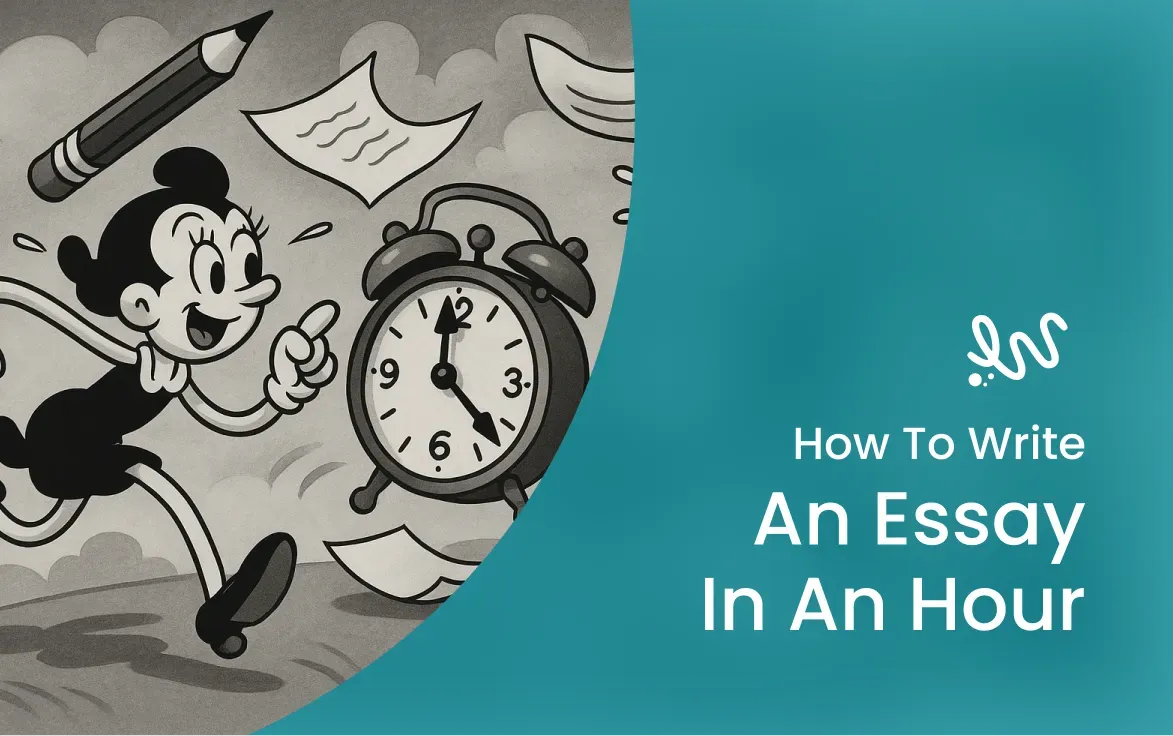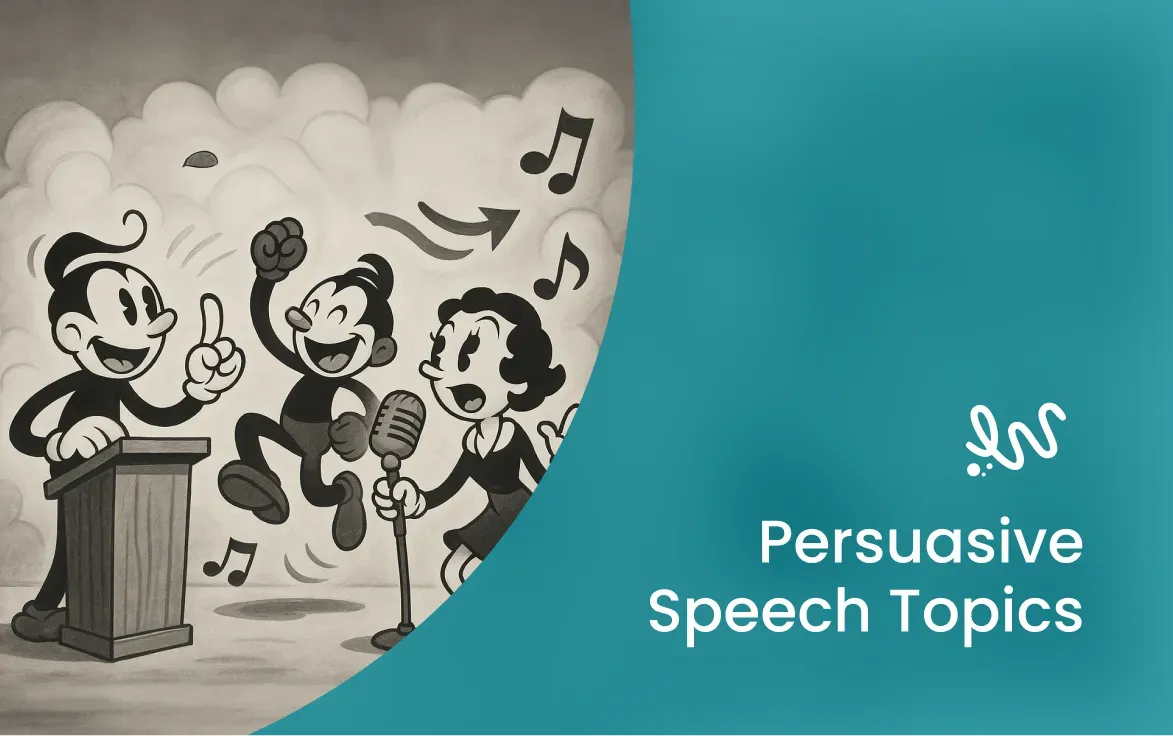An annotated bibliography explains the reference list. Instead of just listing the sources cited, you add a brief summary under each reference entry to show how the source fits your assignment or research question.
This guide will walk you through real-world annotations in APA style, MLA style, and Chicago, using examples of annotated bibliography that follow the most common citation styles.
If you’re not sure how to format your works cited page correctly, our annotated bibliography writing service will make your bibliography smarter.
Research Done. Now What?
Let our team turn your sources into sharp, thoughtful annotations, formatted perfectly and written clearly.
Get Help
Style | Full Name | Used In | Citation Format |
|---|---|---|---|
MLA | Modern Language Association | Humanities (literature, arts, language studies) | Author. Title. Publisher, Year. |
APA | American Psychological Association | Social sciences (psychology, education, sociology) | Author, A. A. (Year). Title. Publisher. |
Chicago | Chicago Manual of Style | History and some humanities | Author, Title (Place of publication: Publisher, Year) |
MLA Annotated Bibliography Examples
The Modern Language Association (MLA) style is often used in humanities papers, especially in literature and cultural studies. An MLA annotated bibliography includes a full reference entry followed by a brief summary or evaluation of the source. Key rules are double spacing, a hanging indent, and alphabetical order. Entries should be written in full sentences and formatted in 12-pt Times New Roman.
Williams, Joan. Unbending Gender: Why Family and Work Conflict and What to Do About It. Oxford UP, 2000.
A sociological study exploring traditional sex roles and their impact on modern careers. Williams cited earlier studies and connected them to contemporary challenges faced by working women. The book’s balance of qualitative data and personal narrative makes it both rigorous and engaging.
Smith, John. “The Future of Emotional Development in Adolescents.” American Sociological Review, vol. 58, no. 3, 2021, pp. 456–472.
This article examines emotional development among young adults. The hypothesis strongly supported that emotional intelligence correlates with self sufficiency. Useful for exploring psychological factors that influence sex role attitudes.
Brown, Michael. “Nonfamily Living Among Young Adults.” Journal of Youth Studies, vol. 35, no. 4, 2022, pp. 312–328.
Brown uses data from the national longitudinal surveys to argue that nonfamily living alters traditional family orientations. This study is helpful for understanding modern relationship patterns.
Lopez, Angela. “Changing Attitudes Toward Marriage.” Social Psychology Today, vol. 12, no. 2, 2020, pp. 211–225.
Lopez found that marrying increased individualism among young women, contrasting previous findings. Her work illuminates shifts in emotional development over time and highlights gender-specific trends.
Taylor, Sarah. Self Sufficiency and Young Adults. Brown University Press, 2019.
This book explores the effects of living independently before marriage. It offers a deep dive into the development of identity and self-reliance, particularly among young females and young males.
Khan, Aamir. “How Traditional Sex Roles Influence Career Paths.” The Career Journal, vol. 27, no. 1, 2022, pp. 67–81.
Khan analyzes data from young men and young women to evaluate how early gender norms shape their professional goals. Strong resource for research on workplace inequality.
Nguyen, Lien. “Modern Dating and Its Impact on Emotional Stability.” Youth & Society, vol. 45, no. 5, 2021, pp. 540–556.
Using interviews, Nguyen evaluates how dating trends affect emotional development in young adults. Offers a fresh look at sex role attitudes within Gen Z.
Harrison, Tom. Growing Up Digital: Social Media and Identity. MLA Handbook Publishers, 2020.
Harrison connects social media use with the author’s background in adolescent psychology. The work links online behavior to shifts in traditional family orientations.
Davis, Monica. “The Gender Divide in Higher Education.” Educational Review, vol. 64, no. 3, 2020, pp. 200–215.
Davis’s findings reveal significant gender differences in academic motivation. The article provides useful information for anyone examining gender and emotional development.
Rand Corporation. “Youth Behavior and Long-Term Goals.” RAND Research Briefs, 2022.
This publication analyzes how self sufficiency and life goals vary across age and gender. A helpful annotated list for those focused on future trends in youth behavior.
APA Annotated Bibliography Examples
The APA style, based on the Publication Manual of the American Psychological Association, is widely used in the social sciences. An APA annotated bibliography includes a reference entry followed by a concise summary, evaluation, or reflection. Entries are double spaced, use a hanging indent, and follow standard 12-point Times New Roman formatting. All sources must be cited using APA citation style.
Williams, J. (2000). Unbending gender: Why family and work conflict and what to do about it. Oxford University Press.
This book analyzes traditional sex roles and the structural conflicts they create in modern workplaces. The author’s background in law and gender studies strengthens the critique. Offers a useful perspective on the pressures faced by working women.
Smith, J. A. (2021). The future of emotional development in adolescents. American Sociological Review, 58(3), 456–472.
A peer-reviewed study that tests how emotional development shapes social behaviors among young adults. The author’s hypothesis is strongly supported by longitudinal data and identifies key psychological trends.
Brown, M. (2022). Nonfamily living among young adults: Changing traditional family orientations. Journal of Youth Studies, 35(4), 312–328.
Based on data from the National Longitudinal Surveys, this article argues that young adults who live independently before marriage tend to adopt less traditional family values.
Lopez, A. (2020). Marrying increased individualism: Cultural shifts in Gen Z. Social Psychology Today, 12(2), 211–225
Lopez examines emotional development in young women and young men, noting how marriage timing correlates with self sufficiency. The article is relevant for assignments on identity formation.
Taylor, S. (2019). Self sufficiency and young adults. Brown University Press.
A well-researched book that dives into financial independence and emotional resilience among college-aged youth. The findings support earlier study results while offering new insights on gender.
Khan, A. (2022). Career paths and traditional sex roles. The Career Journal, 27(1), 67–81.
Khan’s research reveals how early exposure to traditional family expectations shapes job choices. Especially useful when comparing young males to young females in professional development.
Nguyen, L. (2021). Online dating and emotional development. Youth & Society, 45(5), 540–556.
Explores how dating apps have altered romantic expectations among young adults. The study links new behavior to shifts in sex role attitudes, and the sample annotations are clear.
Harrison, T. (2020). Growing up digital: Social media and identity. MLA Handbook Publishers.
While published under an MLA imprint, this work uses APA-friendly research methods. It explores emotional development, self-image, and traditional sex roles through digital behavior.
Davis, M. (2020). The gender divide in higher education: Significant gender differences. Educational Review, 64(3), 200–215.
The article addresses sex-based disparities in motivation and achievement. Annotations provide a brief summary of both the author's background and argument, making this a strong secondary source.
RAND Corporation. (2022). Youth behavior and long-term goals. RAND Research Briefs.
This report evaluates trends in ambition, emotional development, and self sufficiency using national data. Ideal for annotated bibliography examples that center on modern adolescence and societal expectations.
Chicago Annotated Bibliography Examples
The Chicago Manual of Style is widely used in history and the humanities. In a Chicago style annotated bibliography, each reference entry uses Chicago citation style, either notes and bibliography or author-date, followed by a paragraph that summarizes, evaluates, or reflects on the source. Entries are typically double spaced, with a half-inch indent for annotations, and organized in alphabetical order by the author's last name.
Williams, Joan. Unbending Gender: Why Family and Work Conflict and What to Do About It. Oxford University Press, 2000.
Williams, a legal scholar, explores how workplace norms uphold traditional sex roles and hurt working women. Her argument is grounded in law and sociology, offering both cultural critique and policy suggestions.
Smith, Jordan A. “The Future of Emotional Development in Adolescents.” American Sociological Review 58, no. 3 (2021): 456–472.
This peer-reviewed article studies emotional development in young adults and connects early socialization with adult behaviors. The data supports the hypothesis strongly and adds to current debates on identity formation.
Brown, Michael. “Nonfamily Living Among Young Adults Alters Traditional Family Orientations.” Journal of Youth Studies 35, no. 4 (2022): 312–328.
Using National Longitudinal Surveys, Brown finds that young men and young women who live alone before marriage often reject traditional family norms. A key source for assignments on generational shifts.
Lopez, Aria. “Marrying Increased Individualism: Cultural Shifts in Gen Z.” Social Psychology Today 12, no. 2 (2020): 211–225.
Lopez analyzes how modern values reshape relationship goals. Strong sample annotations explain that emotional development and self sufficiency are shaping new expectations for young adults.
Taylor, Sam. Self Sufficiency and Young Adults. Providence: Brown University Press, 2019.
A comprehensive look at emotional resilience, this book provides a brief summary of longitudinal data and its impact on gender identity development. The author’s background in sociology adds depth.
Khan, Amina. “Career Paths and Traditional Sex Roles.” The Career Journal 27, no. 1 (2022): 67–81.
This article tracks how gender expectations influence career ambitions in young females and young males. Khan highlights significant gender differences in early professional decisions.
Nguyen, Lan. “Online Dating and Emotional Development.” Youth & Society 45, no. 5 (2021): 540–556.
This study connects technology use with evolving sex role attitudes. The analysis shows how dating apps impact emotional development, especially among young women.
Harrison, Theo. Growing Up Digital: Social Media and Identity. New York: MLA Handbook Publishers, 2020.
Though rooted in MLA style formatting, this research applies Chicago methods. Harrison explores how digital life reshapes self-image and identity in adolescence.
Davis, Maya. “The Gender Divide in Higher Education: Significant Gender Differences.” Educational Review 64, no. 3 (2020): 200–215.
Davis discusses how traditional sex roles shape educational outcomes. The annotations offer a clear summary and critique, making this a useful model for those researching youth and academic achievement.
RAND Corporation. Youth Behavior and Long-Term Goals. Santa Monica, CA: RAND, 2022.
A data-driven publication that examines ambition, emotional development, and traditional family orientations. Ideal for citations in annotated bibliographies focusing on adolescent behavior and public policy.
No Time to Write It All Out?
From citations to summaries, we’ll build your annotated bibliography from scratch.
Reach Out
The Bottom Line
Whether you're using MLA, APA, or Chicago style, an annotated bibliography is proof that you’ve done the reading, asked the right questions, and figured out how each piece fits into the bigger picture you’re trying to understand or explain. It’s where your research starts to feel like your own.
Here’s what to remember:
- Each reference entry should follow the required citation style
- Your annotation should include a brief summary, key insights, and, when appropriate, reflection or evaluation
- Annotations help you analyze what the source says and why it matters for your research
- Good annotations go beyond a summary. They show critical thinking and intention
- Use sample annotations to guide your structure, voice, and level of detail
And if you’re staring at a blank document unsure where to begin, our citation generator has your back. This tool help you build an annotated list that’s accurate, focused, and perfectly formatted.
FAQ
What Is an Example of an Annotated Bibliography?
An annotated bibliography example includes a citation followed by a short paragraph that summarizes and comments on the source.
How to Write an Annotated Bibliography Example?
Choose your sources, format your citation, and write an annotation that highlights the source’s main points and relevance to your topic.
Sources
- University of Melbourne. (n.d.). Writing an annotated bibliography. Academic Skills. https://students.unimelb.edu.au/academic-skills/resources/reading,-writing-and-referencing/annotated-bibliography/writing-an-annotated-bibliography
- Cornell University Library. (n.d.). How to prepare an annotated bibliography. https://guides.library.cornell.edu/annotatedbibliography



